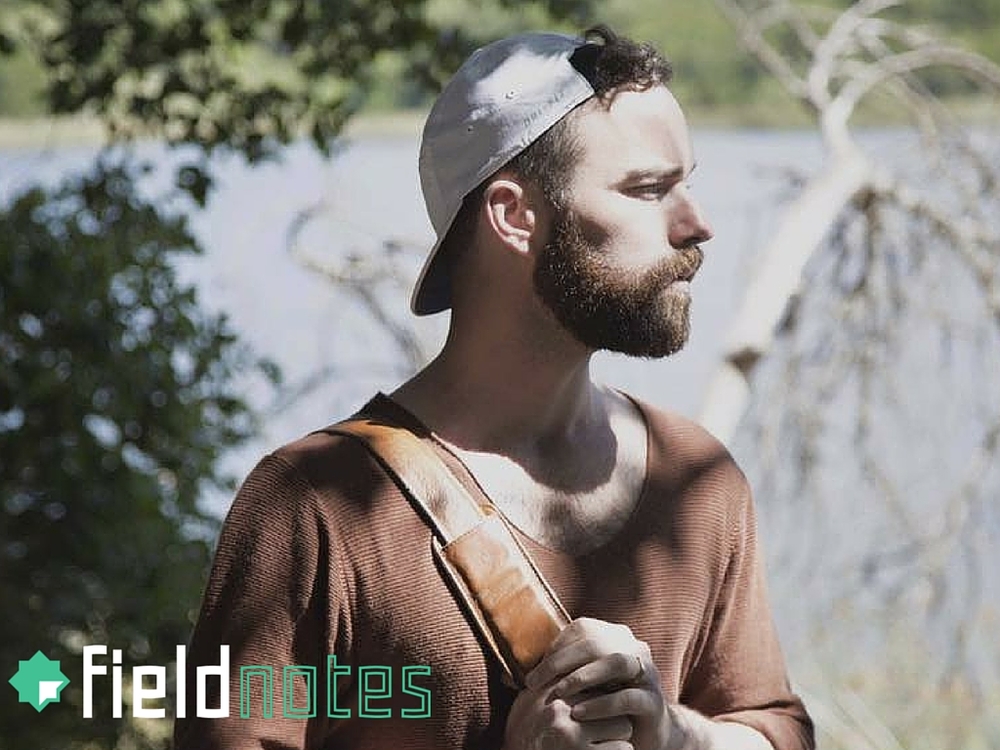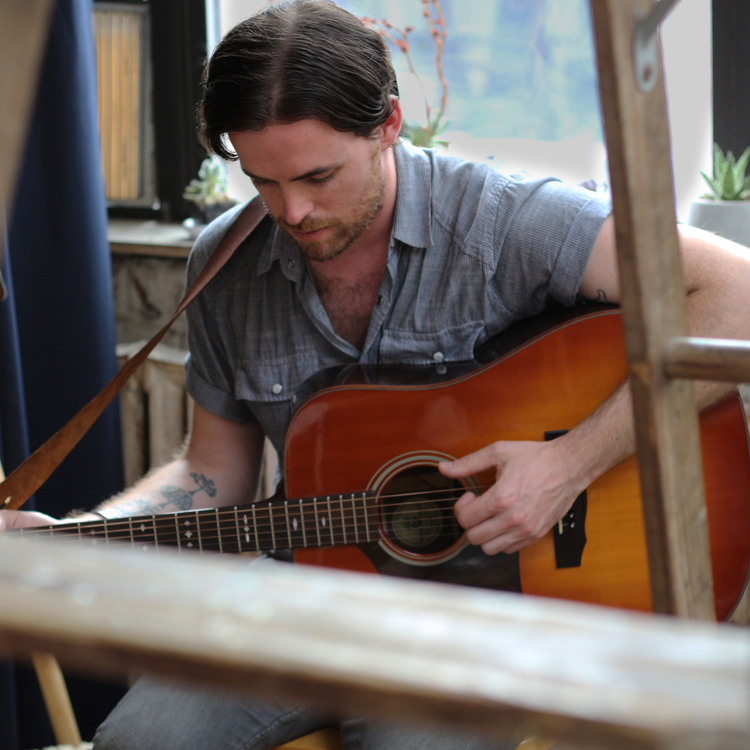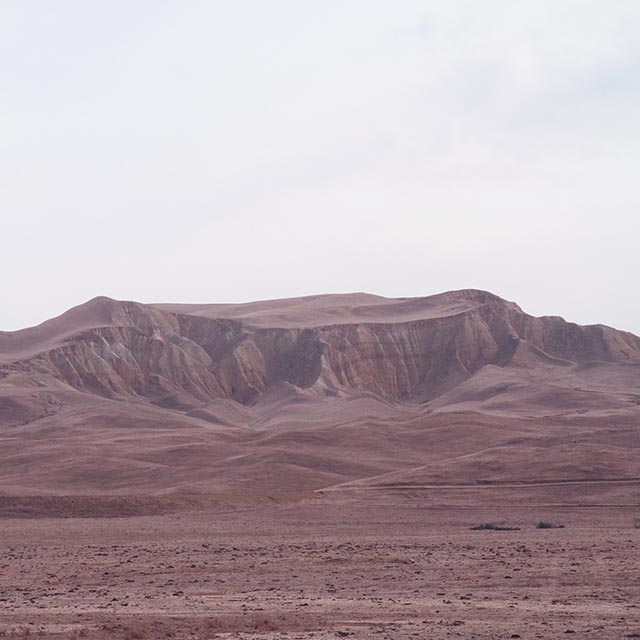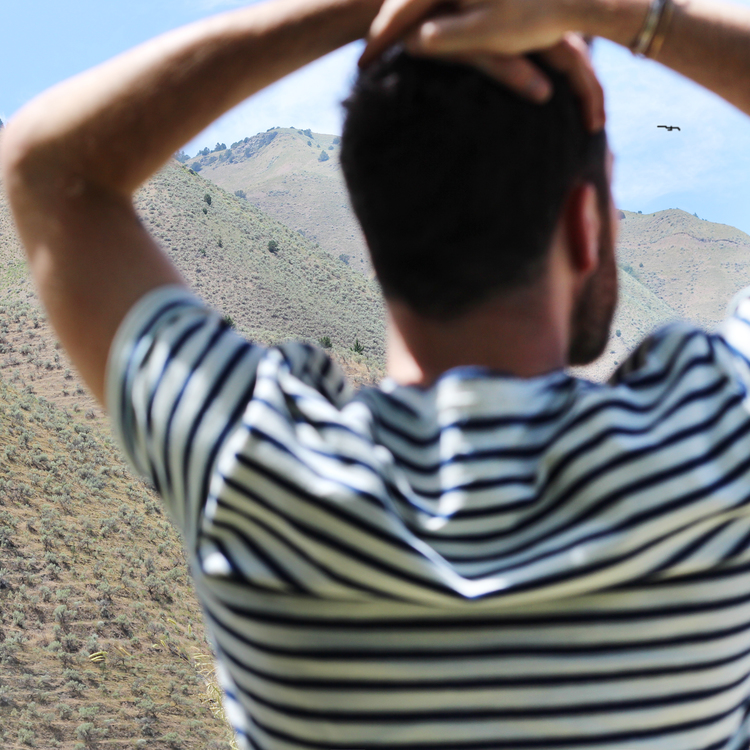
Photo by Andrew Southam

Interview #59: Bowen Ames, Creative Director
Bowen Ames is a force in the creative world. Sticking to the title of Creative and Art Director, his roles expand and shift depending on the nature of each project, making him a renaissance figure in the field. The majority of his career has been commercial film and photography, working with the likes of Wieden + Kennedy on the Travel Oregon campaign. He also manages to dive into more experimental creative mediums like music videos, short film, interactive media, product design and contemporary performance art. It’s safe to say that Bowen pushes himself to discover what’s next out there.
His journey took him to the highway in our recent collaboration with him on the Cover of America project. He packed his bags and hit the road for a few months with his dog Camper, and sought out the perfect playlist for the road. He gathered some of his favorite tracks from the Marmoset roster and had them covered by other Marmoset artists that he met up while traveling from city to city.
It’s safe to say that Bowen is busy, yet it’s not only in the impressive amount of work that he’s been able to create, a lot of what makes Bowen’s films and photography so potent comes from the constant experimentation of how he can further his work — always guided with the question “what’s next?”
M: What compelled you to be an art director? How does your work in film relate to that of your photography?
BA: I have always thought of film as a heightened experience of photography. My love for photography comes from an innate desire to communicate or transfer the precise complexion of a moment to the viewer. In photography you only have a single frame. In film, with the addition of sound and movement, there is the potential to heighten the viewer’s experience and seat them within that moment. As an art director within photography it’s my roll to control and foster the very nature of the production that makes an image happen: assembling the creative team, communicating the images we are after, and crafting our creative strategy to achieve them. In film, it’s a much more complex collaboration with an often much larger crew. When the camera or the subjects are in motion, when an entire group of people have gathered to make a shoot happen, when resources or light are limited or changing — it’s an entirely different experience with far more variables. So in film, my job becomes much more focused on the consideration of every visual element on set coming together in the moment: location, wardrobe, props, lighting and later the music, the voic-ver, and other visual aspects of post-production.
M: What’s the toughest decision you’ve had to make in your field?
BA: I think the toughest decision I’ve had to make is one I’m steadfastly avoiding and that is where to focus all my energy. The truth is there was once a time when someone like myself needed to ask themselves ‘do I want to be a Production Designer or a Set Dresser? Do I want to be an Advertising Agency Art Director or a Product Designer?’ I have never made that call and my work continues to amalgamate because of it. I choose my work based on who it is with, how it inspires me or fits into my life at the time, and where I want to grow as a creative. At times, it’s difficult to fight the pressure to commit one client, one area of expertise, or one facet of my creative brain but as I get older, I feel like I’m steadfastly growing an expertise in several areas and that feels really valuable to me.
M: How do you feel music has a role in your art?
BA: Music Videos is where I started, so music is firmly at the foundation of my creative work. When I make music videos the process always starts with a meditative relationship to the song. I listen to it in a lot of settings and work to find the intrinsic visuals or narrative which emerge and potentially enhance its precise nature. Since moving on from those days and working in other mediums, my life with music is a little more personal. That’s to say, I listen for pleasure more than ever. But I still find myself listening in that meditative way because the ideas that come from listening quite closely tend to be my better ones. A lot of my commercial work is focused around crafting photographic content that communicates an authentic representation of different lifestyles and cultures. As a practice, I often ask a lot of strangers what they are listening to on their headphones. You can learn so much from what a person chooses to input directly into their brains while they are going about their day.
M: How do you feel music is misused in projects?
BA: I think that commercial scoring is often times highly reductive. There is this unfortunate process whereby a commercial is made and paired with an original piece of music which probably enriches and authenticates the video content but rather than licensing and directly compensating the musicians behind the original music, a sort of cheap commercialized, approximated representation of the original sound is made. The results are almost always pretty dismal. Because of it, musicians often grow wary of working with advertisers. It’s unfortunate because if more original music was used to the satisfaction of both parties, ther woul be a larger working musical middle class, lesser-known bands would be able to reach wider audiences, and commercials wouldn’t be so terrible.
M: What propelled and inspired you to go on this road trip?
BA: A lot of things. I had just completed a contract doing photo art direction for Google whereby I had fully dedicated myself to the work and had shelved my wanderlust for a long period. When my project wrapped up I knew I needed to recharge and didn’t want to lose the creative momentum I had built up. Secondly, at this point in my career and life, I have developed a reputation or niche in directing work that represents creative cultures and lifestyles. Ironically in doing that work I was less engaged with the culture I like to be so I wanted to get back to what I know and what I love. My creative brain simply just needs to travel solo, take photos and videos everywhere I go, and meet people who are doing what they love.
M: What’s the most recent album you’ve listened to?
BA: For the majority of the past three months I’ve almost exclusively listened to the play list from Cover of America. No joke or promotion! It was my mission to just devour those songs and enjoy them to the fullest. From that play list a few artists emerged that caught my interest and I downloaded more.
Wesley Jensen stood out immediately. There’s a road-weariness to his vocals and song-writing that really matched my mood while I traveled out on the open road. I grew fond of his whole discography and continue to discover more songs I love.
I also found myself transfixed by The Plain Ensemble, usually when I was exploring in major cities with my headphones on. His tracks seem to be infused with an upbeat, radiant positivity, which is an incredible soundtrack for exploring an urban space. I also love that his songs often and suddenly takes rhythmic turns which lend towards an almost cinematic structure.




Lastly, I met up with a sculptor in New Mexico and we ended up talking about our shared love for Joanna Newsom. We had differing opinions on the best album from her discography and he convinced me I needed to spend more time with Ys. I started listening to it when I crossed back into Oregon and have grown really fond of the songs, just in time for her upcoming album release in October.
M: How do you know when you’re finished with a project?
BA: When the deadline reaches. That’s the only way I’ll ever finish because I am, like most designers and creatives, never entirely satisfied with my own work. I will always believe there is a way it can be improved or reworked. This is is one of the more troubling aspects of Cover of America: there is no deadline as it’s largely self-propelled. I have extended it’s life at least three or four times now and currently there is no precise end-date.
M: What makes a good story?
BA: I believe that people truly derive a pleasure in learning and so I think a good story is one that somehow expands their knowledge or understanding of the world and their agency within it. I had a conversation with a song-writer in Colorado this summer about her challenges writing songs that fell into her style of classic Americana but were simultaneously inventive in some way. I immediately thought of a track by One Hundred Dollars called “Careless Love” in which lead singer Simone Schmidt tells the story of the women on the receiving end of the reckless affection of their country-singing men. It’s a perspective often left less considered and her poignant lyricism gives the listener a really epiphanic experience to an otherwise classic arrangement.

I’m happy that Cover of America has inspired others to wander, explore, and make but there are some stories I think I’d like to tell in ways outside of film and photography. Right now I’m exploring new mediums. That said, I think everyone has good stories to tell, but it takes a critical mind to find that moment of reckoning where some deeper knowledge can be derived from the narrative and passed on in way that resonates.
M: What’s coming up on the horizon in your life as an artist?
A: I’m not quite done with Cover of America so I’m hitting the road for the rest of September. There is still a lot of content from the past three months that I’ve been working through, editing, and making sense of. Beyond that, I’m very excited to dive into the next creative adventure. I’ve been fending off an urge to make some big changes in my creative practice and I think this fall I’ll take some leaps in new directions. Time will tell.


Still the best road trip/night-driving song after nineteen years: Dramamine by Modest Mouse, followed closely by La Femme D’Argent by Air.
Such a great song! One of MM’s best.